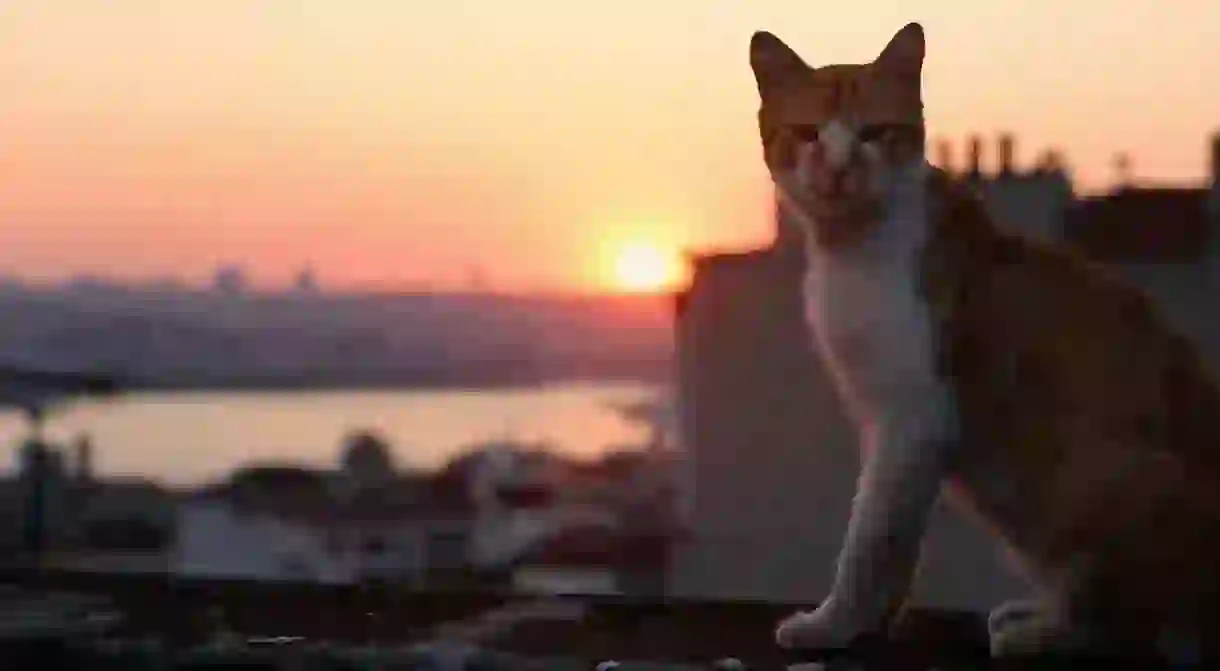Why The Movie 'Kedi' Is Cool For Cats And Humans, Too

Kedi is Istanbul-born director Ceyda Torun’s loving tribute to the legions of stray cats that inhabit her hometown. What makes this documentary so special? Cats are everywhere in Kedi. They forage, feed their young and protect them from other cats, play with and caress each other, and perch unconcernedly on ledges hundreds of feet from the ground. They prowl, slink, leap, bask, and look inscrutable, or sometimes needy.
One pair sleeps in a romantic tangle. One cat moodily abandons a fishmonger’s leavings to a flock of seagulls. A kitten lays lifeless in the hands of a middle-aged man who tenderly carries it to a mortuary—the film’s only fatality. A woman who devotes her life to street cats reports the recent loss of five of the 60 she tends. It’s always cancer, she says. Yet Istanbul’s cats seem a robust lot. A man who feeds cats beside the Bosphorus says the warmth coming off the water keeps them alive.

A little reminiscent of the “city symphony” films of the late 1920s, Kedi is a cat-centric portrait of the ancient city in modern times. Torun set up each segment of the film with an aerial dolly shot accompanied by tinkling xylophone music. One shot moves toward a former Ottoman port area. One of the interviewees says this is where Norwegian ships’ cats found themselves stranded after taking unofficial shore leave. Some of the feline immigrants that contributed to Turkey’s cat diversity were Vikings therefore.
These days, old neighborhoods and green patches are being swept away to create space for new property development. No longer accommodated by the city, the cats are constantly being uprooted. An artist interviewed in the film says she fears the cats will be gone in two or three years.
Kedi establishes empathy with seven particular cats via point-of-view shots. Mounted on a low-level Steadicam—or perhaps a skateboard—the camera travels with them as they weave among human passers-by or slip into nooks and crannies. One mouser is filmed—with an infra-red camera—pursuing its quarry in a narrow passage below ground. A calm subway cat probably has larger rodents on its mind.
Among the seven is a cat that stopped “chilling all day” when motherhood gave her a purpose. Another female, known affectionately as “Psycho,” fights “prettier” rivals interested in her husband. A cheerful black-and-white bruiser defends his territory from an aggressive ginger newcomer to the ‘hood. Of the cats that hang around cafes, there’s an elegant grey and white gent who’s either too polite or too proud to venture inside the store to harass the proprietors or customers for scraps. When he’s hungry, he urgently paws the window.

Citizens of different ages, sexes, and social groups explain on camera why they admire and support Istanbul’s cats. You don’t have to be a cat lover to appreciate the film. If ever there were a moment for people to recognize that their own needs aren’t paramount, that they share their habitats with other animals that are dependent on them, it is now.
There’s no suggestion that Kedi relates inter-species harmony to multi-faith or multi-ethnic harmony, but the idea is implicit because a couple of the film’s interviewees remark on how similar cats are to humans. Far from seeming aloof or narcissistic—a familiar slur—Istanbul’s felines are shown interacting peacefully with the two-legged species.
It also transmits to the viewer the therapeutic effect cats have imparted to some of their protectors. The middle-aged woman who, with a friend or relative cooks and distributes 20 pounds of chicken daily to “her” 55 surviving strays, talks about her inability to come to terms with death. “My therapist says that I try to heal my own wounds by healing theirs,” she says of the cats. “I guess I’ll heal when they heal.”

The kindly man by the Bosphorus says looking after cats “cured” him after he had a nervous breakdown. A younger man recalls that he and his brother were inspired by scenes in spaghetti Westerns to plant crosses by the graves in their cat cemetery; his outraged father sent him to Quaran school. He still credits cats with teaching him stoicism and saving his childhood.
Understanding and helping cats has transcendent value, Kedi observes. “If you ask me, the troubles street cats or other street animals face are not independent of the troubles we all face,” one woman says. “If we can learn to live together again, maybe we’ll solve our own problems as we try to solve theirs. In fact, I’m sure that we would even regain our fading sense of humor and rekindle our slowly dying joy for life.”
Kedi is screening at the Metrograph in Manhattan. It will open in other US cities in the coming weeks.
Read Culture Trip’s Feride Yalav on the history of Istanbul’s cats here.













